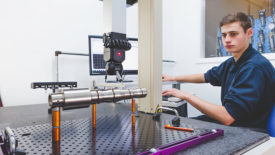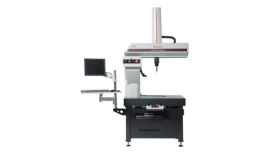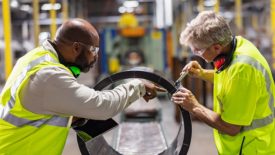Measurement
Quality 101
How Accurate Surface Finish Measurement Improves Product Life and Performance
Here we’ll explore the intricate relationship between surface finish and factors like friction, wear, and fatigue life.
June 10, 2024
Measurement
3D Scanning Fast Becoming Essential Tool for U.S. Military Manufacturers
With its precision, 3D scanning distinguishes itself from conventional measurement tools.
May 21, 2024
Happy World Metrology Day!
The International Definition of Calibration, Verification, Validation, Certification, and Adjustment
May 20, 2024
Automotive
Inside the Expanding Applications of Vision Measurement Systems in Automotive Manufacturing
Here are the key advantages of vision systems for automotive manufacturers.
May 8, 2024
Measurement
How IoT Integration Enhances Quality and Speed, Part 2
IoT’s real-time analytics and in-process control are making operations more precise and products more reliable.
May 2, 2024
Measurement
Precision Trends in Metrology, Part 1
The integration of 3D CAD models and advanced software algorithms are setting new standards for accuracy and efficiency in manufacturing.
May 2, 2024
Face of Quality | Jim L. Smith
Measuring the Right Things Lead to Organizational Excellence
May 1, 2024
Stay in the know with Quality’s comprehensive coverage of
the manufacturing and metrology industries.
eNewsletter | Website | eMagazine
JOIN TODAY!Copyright ©2025. All Rights Reserved BNP Media.
Design, CMS, Hosting & Web Development :: ePublishing











